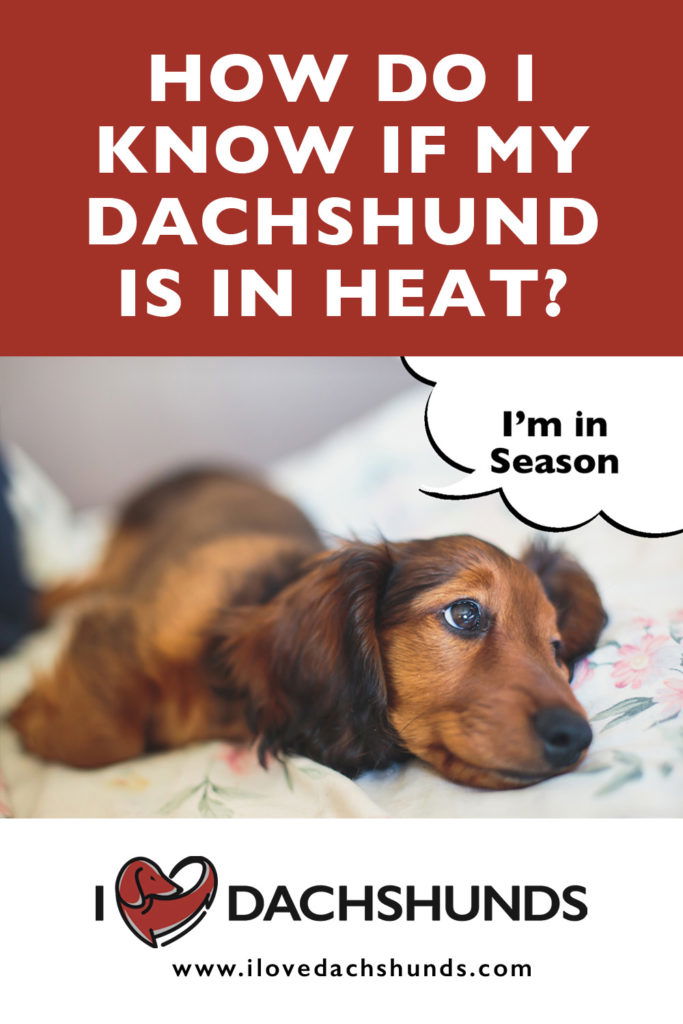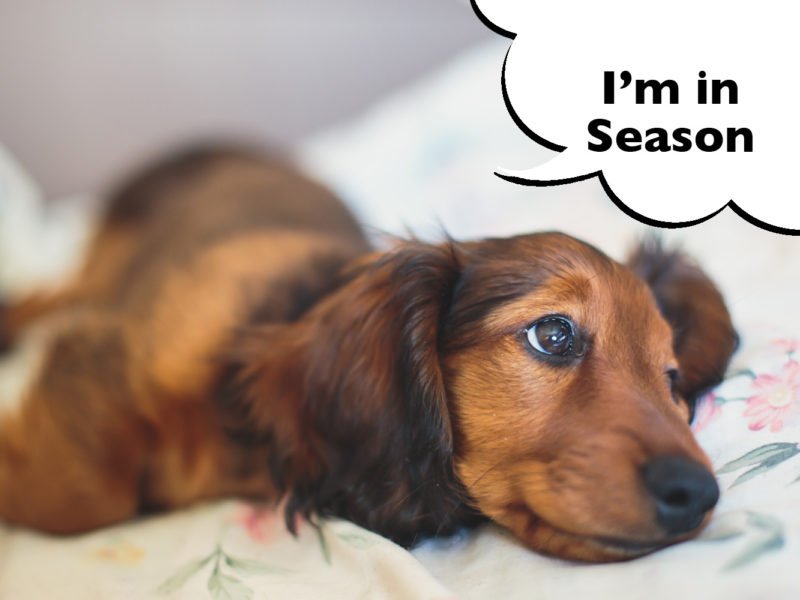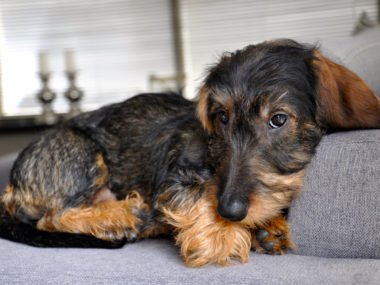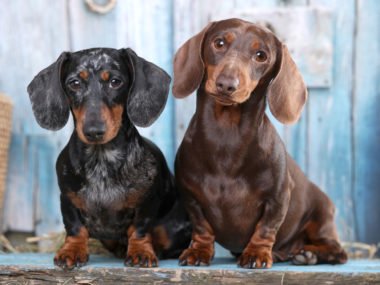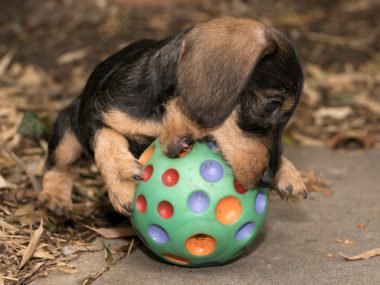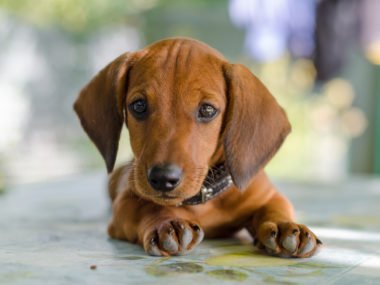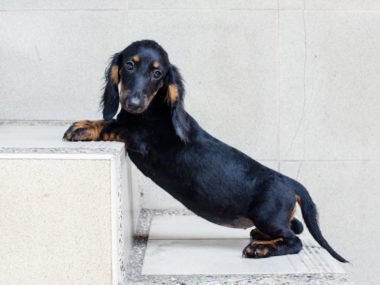Do you have a female dachshund and want to know more about her heat cycle? Or, is your dachshund behaving differently and you want to know if she’s about to come into season? Here’s everything you need to know about dachshunds and heat cycles.
How Do I Know If My Female Dachshund Is In Heat? You know your female dachshund is in heat when you start to notice bloody discharge, swollen vulva (lady bits), excessive cleaning of the vulva, frequent urination, changes in appetite and behavioural changes.
Read on to find out when your dachshund’s first season starts, how long it lasts, how often the heat cycles happen, whether you should use doggy diapers and how you can help your dachshund through this difficult time.
Table of Contents
- What Does It Mean When A Dachshund Is In Season?
- What Are The Signs A Dachshund Is In Heat?
- When Is A Dachshund’s First Season?
- How Long Does A Dachshund’s Season Last?
- How Often Does A Dachshund Go Into Heat?
- What Is The Heat Cycle Of Dachshunds?
- How Can I Help My Dachshund During Her Season?
- Should I Use Dog Diapers During My Dachshund’s Season?
- When Do Dachshunds Stop Going Into Heat?
- How Do I Stop My Dachshund’s Heat Cycle?
- Can Dachshunds Get Infections After Their Heat Cycle?
- What do I do next?
This article is based on research and personal experience as a Dachshund owner of 10+ years. I’m not a Vet, qualified dog trainer or dog behaviourist.
What Does It Mean When A Dachshund Is In Season?
About twice a year, your female dachshund will have a heat cycle, or season. It’s the period of time when your dachshund is fertile and most receptive to mating. Which basically means you need to watch her like a hawk because she can easily get pregnant!
What Are The Signs A Dachshund Is In Heat?
The most common signs your dachshund is in heat are:
Bloody Discharge
Bloody discharge may be one of the first signs you’ll see, and your dachshund will become obsessed with keeping herself clean. That means that while you may not see any spotting of blood on beds or the floor, you may notice that she’s spending more time licking and cleaning herself than usual.
Swollen Vulva
Your dachshund will also have a swollen vulva (which is basically the name for her ‘lady bits’). The easiest way to check is to have your dachshund lay on her back for a tummy rub. If she’s in season, you’ll see that her vulva stands out a lot more than usual. You may also notice the hair around that area is wet from all the cleaning she’s doing.
Frequent Urination
Weeing more often than normal is another sign your dachshund is in season. She does this to let all the male dogs know she’s in heat, not because she has a full bladder. Her urine is full of chemicals that pass on the message that a girl in season lives here. With the incredible ability of a dog’s nose, that message can be detected by male dogs from miles away!
Appetite Changes
Some dachshunds can have appetite changes during their season. It normally happens during the first week. She may not be interested in food or could be more picky than usual. Or she may be ravenous and want more food than she normally eats.
Behavioural Changes
When your dachshund is in heat, you may notice some behavioural changes. Some females can be a bit grumpy and moody. They can be aggressive towards other females, get stressed more easily, be more clingy, more anxious, and less tolerant than usual.
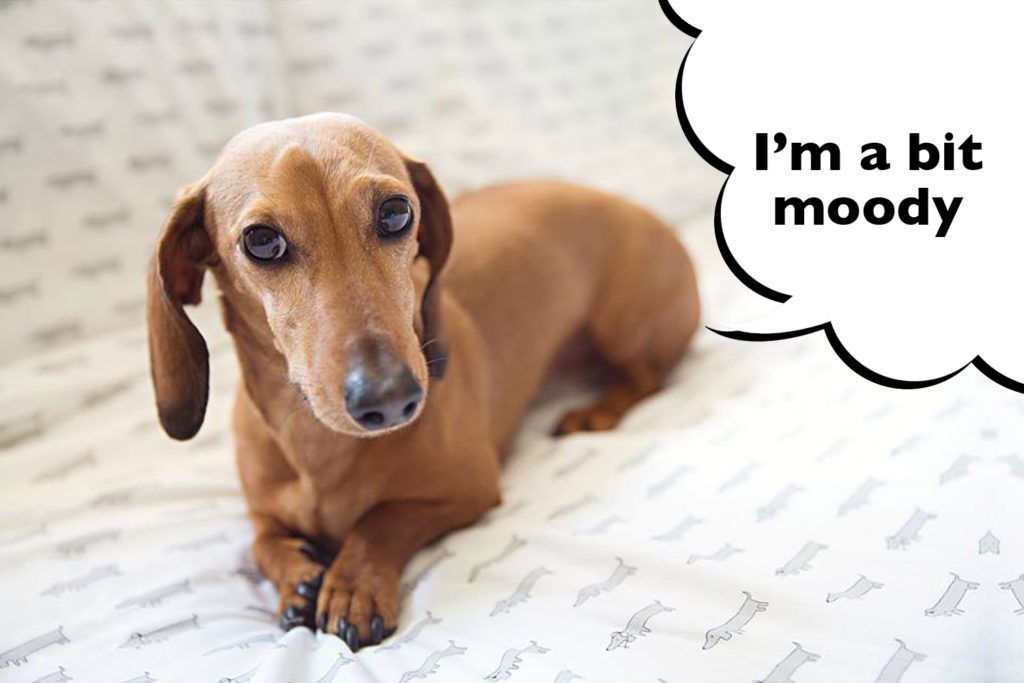
When Is A Dachshund’s First Season?
Female dachshunds generally come into season for the first time when they’re between 6 and 12 months old. Although, it can sometimes be as long as 18 months before her first season begins. In homes where there are older female dogs who haven’t been spayed, youngsters may come into season earlier.
How Long Does A Dachshund’s Season Last?
A dachshund’s season lasts for around 21 – 28 days. That’s from the point of beginning the bloody discharge through to when she’s no longer interested in mating, and all the physical signs have disappeared.
The bleeding usually lasts for around nine days. Then, you’ll start to see a straw-colored discharge, which lasts for another week. This is when your dachshund is most fertile and ready to mate. So, it’s very important not to think that your dachshund is now safe to go out and mix with other dogs, just because the bleeding has stopped. By the end of the second week of the season, her body should start to return to normal.
How Often Does A Dachshund Go Into Heat?
Most dachshunds go into heat every 6 to 10 months, but this can vary a lot between dogs. It can sometimes take up to 24 months before they become settled into a regular schedule.
What Is The Heat Cycle Of Dachshunds?
There are the four key stages in a dachshund’s heat cycle:
Proestrus
This first stage of your dachshund’s heat cycle starts when the vaginal bleeding begins and lasts for around nine days, though it can be as short as three and as long as seventeen.
Her vulva will swell up and she’ll spend a lot of time cleaning herself. She’ll keep her tail close to her body and won’t be interested in males during this time. You may also notice your Dachshund becoming more clingy and wanting to be close to you all the time.
Estrus
The second stage of your dachshund’s heat cycle also lasts for around nine days. This is when your female will start to show she’s ready for mating. It’s the only time in the heat cycle when she can become pregnant.
The discharge turns to be more yellowish in colour, and your Dachshund will become quite flirty and playful with male dogs. When she’s ready to mate, she’ll back up to them and then lift her tail either up over her back or hold it to one side.
It’s so important to understand just how determined male dogs can be to reach an in-season girl during this stage. Check that your garden fencing is secure and your dachshund isn’t able to dash out of the door when it’s opened. Don’t walk an in-season Dachshund at the park, especially as entire male dogs can become aggressive if you try to shoo them away. If you can, stay home and exercise her in the safety of your own garden.
Dioestrus
The third stage of your dachshund’s heat cycle lasts for around 2 months. At this point, her discharge will stop and her vulva will pretty much go back to its normal size. She’ll no longer be interested in males and her body will start to return to normal.
It’s also the period of pregnancy. If she’s not pregnant, she’ll still experience the rush of progesterone hormones through her body. It’s thought this happens because, when living in a group in the wild, the females would then be able to help care for the puppies. These hormones can sometimes cause phantom or false pregnancies, where your dachshund looks and feels like she’s actually pregnant, even when she’s not.
If you think your dachshund is having a phantom pregnancy, take her to your vet who’ll double-check she’s not pregnant, or has any other condition that may be causing the symptoms. Most phantom pregnancies stop on their own, but can last between one and four weeks.
Anestrus
The final stage of your dachshunds heat cycle is the resting phase. This is where no sexual interest or hormonal changes occur. It lasts for around 6 to 10 months, until the next heat cycle begins.
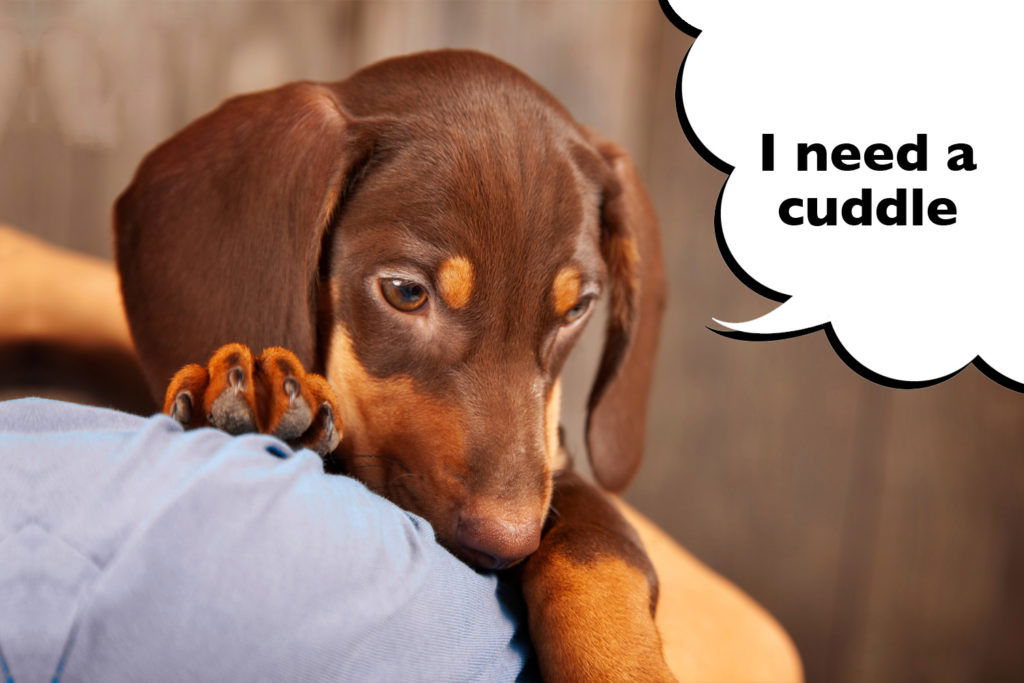
How Can I Help My Dachshund During Her Season?
For younger dachshunds, a heat cycle can be a very confusing time. You have to be so careful she isn’t caught by a male dog while out walking, and should restrict exercise to the garden. Then, add to this that she may not be feeling 100% either, and it’s not too surprising that she’s going to need some extra time and reassurance from you.
For some dachshunds, that’ll mean cuddles on the sofa and quiet quality time with family. For others, they’ll crave something to keep them busy to make up for the lack of walks. Food stuffed toys and searching out food scattered across the garden are two great options for this. Just give her lots of toys and treats, space when she needs it, and some extra fuss and attention.
Should I Use Dog Diapers During My Dachshund’s Season?
Using doggy diapers for your dachshund’s heat cycle is optional. Some people use them to save getting blood on their sofa or carpets, and some don’t. If you go with diapers, just bear in mind your dachshund won’t be able to clean herself the way nature intended. It may be better to let her do her thing, and cover your furniture or put down some old blankets or sheets instead.
When Do Dachshunds Stop Going Into Heat?
Unlike humans, female dachshunds never stop going into heat. This means they can get pregnant at a very senior age, although this would be very risky for their wellbeing and not at all advisable.
As your Dachshund gets older, the time gap between seasons may get longer, and they may not show the physical or behavioral signs they have done before; because of this, it’s often called a ‘silent season.’ This is, however, when you need to watch her really closely for even the slightest changes to prevent any unwanted pregnancies.
How Do I Stop My Dachshund’s Heat Cycle?
The only way to stop your dachshund’s heat cycle is to spay her. However, spaying a dachshund too young and before she’s physically mature, could make her more prone to getting Intervertebral Disc Disease – a painful and debilitating back condition.
This means, she’ll probably have at least one season before being spayed, but speak to your vet about this and take their advice.
Can Dachshunds Get Infections After Their Heat Cycle?
At around two to eight weeks after your dachshund’s heat cycle, she can be at risk of Pyometra. This is a life threatening infection of the uterus that affects unspayed female dogs. The risk of infection is increased with each heat cycle. So, if you see any signs of Pyometra, contact an emergency vet immediately.
So, there you have it! You’ll know your female dachshund is in heat when you start noticing bloody discharge, swollen vulva (lady bits), excessive licking of the vulva, frequent weeing, any changes in appetite and any sudden behavioural changes. To help her get though this difficult time, cuddle her when she wants it and give her space when she needs it. 🤗
What do I do next?
If you read all the way to the end of this article, you’re exactly the sort of person I’d LOVE to join my Facebook Group. Your support for my blog means everything to me so, if you found this article helpful, please kindly share below. Thank you! 💋
